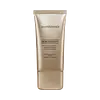What's inside
What's inside
 Key Ingredients
Key Ingredients

 Benefits
Benefits

 Concerns
Concerns

 Ingredients Side-by-side
Ingredients Side-by-side

Zinc Oxide 10.4%
Cosmetic ColorantTitanium Dioxide 2.2%
Cosmetic ColorantWater
Skin ConditioningC12-15 Alkyl Benzoate
AntimicrobialUndecane
EmollientIsononyl Isononanoate
EmollientOctyldodecanol
EmollientGlycerin
HumectantPolyglyceryl-6 Polyricinoleate
EmulsifyingTridecane
PerfumingIsopentyldiol
HumectantSilica
AbrasiveDisteardimonium Hectorite
StabilisingMagnesium Sulfate
Tocopheryl Acetate
AntioxidantHydrogenated Vegetable Oil
EmollientHibiscus Sabdariffa Flower Extract
Skin ConditioningMorus Alba Bark Extract
Skin ConditioningCucumis Sativus Seed Extract
Skin ConditioningTerminalia Ferdinandiana Fruit Extract
AntioxidantMucor Miehei Extract
AstringentSodium Hyaluronate
HumectantCitric Acid
BufferingGlucosamine Hcl
Urea
BufferingSodium Citrate
BufferingPhytic Acid
Stearic Acid
CleansingAlumina
AbrasiveTriethoxycaprylylsilane
Isostearic Acid
CleansingPolyhydroxystearic Acid
EmulsifyingPropylene Carbonate
SolventLecithin
EmollientEthylhexyl Palmitate
EmollientIsopropyl Myristate
EmollientPolyglyceryl-3 Polyricinoleate
EmulsifyingTocopherol
AntioxidantPolyglyceryl-2 Isostearate
EmulsifyingBisabolol
MaskingCeramide NP
Skin ConditioningPentylene Glycol
Skin ConditioningSodium Hydroxide
BufferingFructose
HumectantSodium PCA
HumectantAllantoin
Skin ConditioningTrehalose
HumectantSodium Chloride
MaskingSodium Lactate
BufferingMaltose
MaskingHydrolyzed Corn Starch
HumectantPropanediol
Solvent1,2-Hexanediol
Skin ConditioningCaprylhydroxamic Acid
Sorbitan Oleate
EmulsifyingParfum
MaskingLimonene
PerfumingLinalool
PerfumingAmyl Cinnamal
PerfumingHydroxycitronellal
PerfumingPhenoxyethanol
PreservativeSodium Benzoate
MaskingPotassium Sorbate
PreservativeIron Oxides
Zinc Oxide 10.4%, Titanium Dioxide 2.2%, Water, C12-15 Alkyl Benzoate, Undecane, Isononyl Isononanoate, Octyldodecanol, Glycerin, Polyglyceryl-6 Polyricinoleate, Tridecane, Isopentyldiol, Silica, Disteardimonium Hectorite, Magnesium Sulfate, Tocopheryl Acetate, Hydrogenated Vegetable Oil, Hibiscus Sabdariffa Flower Extract, Morus Alba Bark Extract, Cucumis Sativus Seed Extract, Terminalia Ferdinandiana Fruit Extract, Mucor Miehei Extract, Sodium Hyaluronate, Citric Acid, Glucosamine Hcl, Urea, Sodium Citrate, Phytic Acid, Stearic Acid, Alumina, Triethoxycaprylylsilane, Isostearic Acid, Polyhydroxystearic Acid, Propylene Carbonate, Lecithin, Ethylhexyl Palmitate, Isopropyl Myristate, Polyglyceryl-3 Polyricinoleate, Tocopherol, Polyglyceryl-2 Isostearate, Bisabolol, Ceramide NP, Pentylene Glycol, Sodium Hydroxide, Fructose, Sodium PCA, Allantoin, Trehalose, Sodium Chloride, Sodium Lactate, Maltose, Hydrolyzed Corn Starch, Propanediol, 1,2-Hexanediol, Caprylhydroxamic Acid, Sorbitan Oleate, Parfum, Limonene, Linalool, Amyl Cinnamal, Hydroxycitronellal, Phenoxyethanol, Sodium Benzoate, Potassium Sorbate, Iron Oxides
Ingredients Explained
These ingredients are found in both products.
Ingredients higher up in an ingredient list are typically present in a larger amount.
This ingredient is a solvent. It helps dissolve active ingredients and alter the texture of products.
Propylene Carbonate is commonly used in makeup and with clay, such as montmorillonite or bentonite.
Studies show this ingredient to be safe for cosmetics. When it is undiluted, it can cause skin irritation. (It is always diluted in skincare and makeup). This ingredient is water-soluble.
Propylene Carbonate is created from propylene glycol and carbonic acid.
Learn more about Propylene CarbonateWater. It's the most common cosmetic ingredient of all. You'll usually see it at the top of ingredient lists, meaning that it makes up the largest part of the product.
So why is it so popular? Water most often acts as a solvent - this means that it helps dissolve other ingredients into the formulation.
You'll also recognize water as that liquid we all need to stay alive. If you see this, drink a glass of water. Stay hydrated!
Learn more about Water